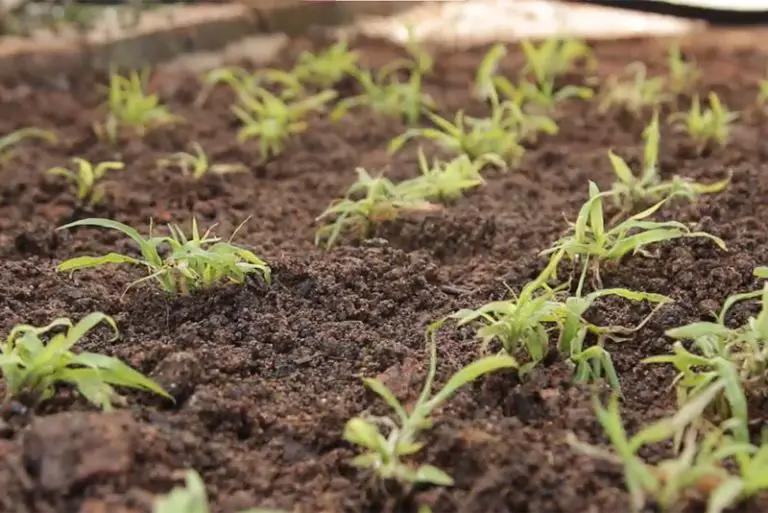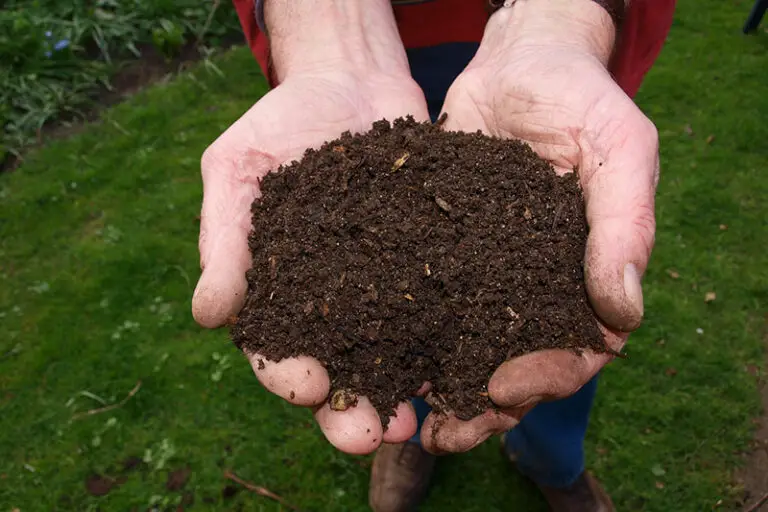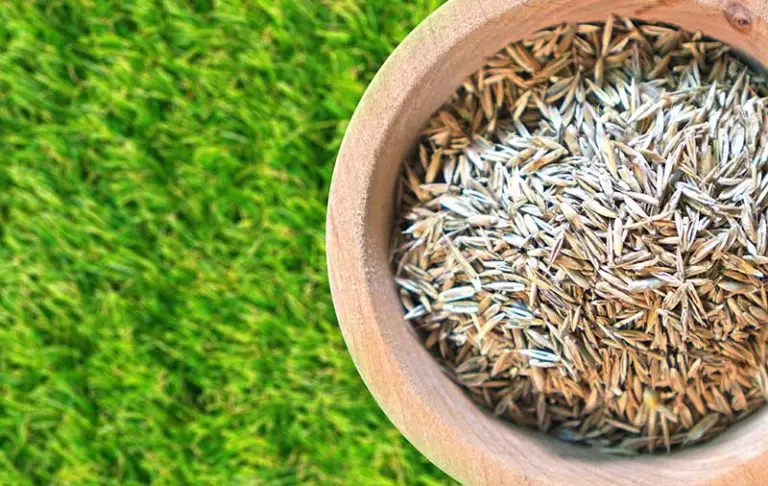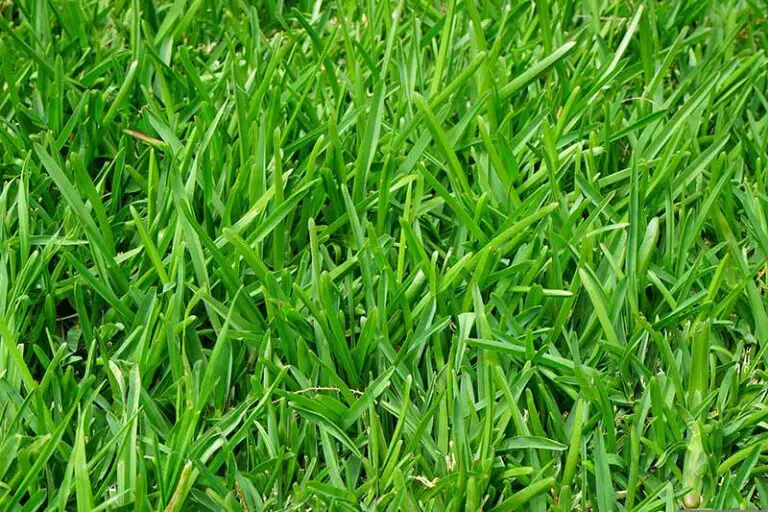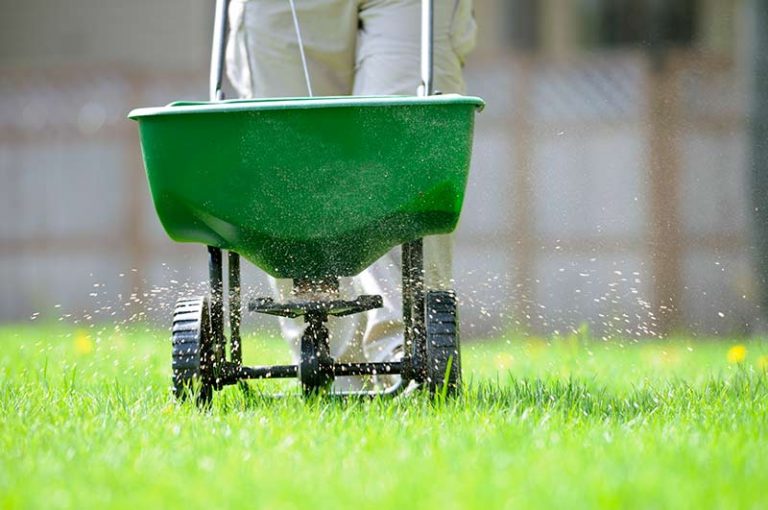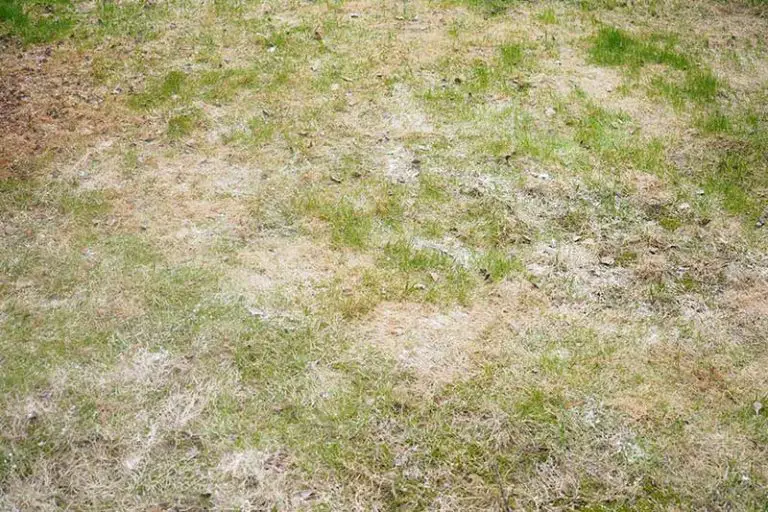Using Straw to Cover Grass Seed
Getting grass seeds to grow can be somewhat of a challenge. Without existing healthy grass blades to help keep the seedlings moist, they may dry out, leaving you with poor germination and an unattractive, patchy lawn. Therefore, covering the seeds will help lock in the needed moisture to ensure successful sprouting. However, can you use a layer of straw to cover the grass seed?
Covering grass seed with straw is not essential, but it does create a warm environment and helps retain moisture, ensuring better germination rates. Additionally, straw prevents birds from eating the seedlings and the wind from blowing them away. But you’ll only want to apply a thin layer of straw.
Straw is an innovative and cost-effective option to cover your grass seed while encouraging successful germination. First, let’s see if it’s necessary and exactly how to use the straw to ensure an abundance of seedlings sprouting. Then, as a bonus, we’ll take a quick look at other alternatives if you can’t access straw.
Should You Use Straw To Cover Grass Seed?
Straw is one of the most popular covering materials for newly planted grass seed—the reason being, straw is a budget-friendly, readily available, and highly effective option that improves germination rates.
Since most turf grass seed generally takes anywhere between 7 to 21 days to germinate, many homeowners prefer covering the seedlings with a layer of straw to protect them from the wind and hungry birds.
Additionally, grass seed and newly germinated grass seedlings will die if you let them dry out completely. A thin layer of straw mulch will help slow down the evaporation of the water in the soil, allowing the seeds to stay moist while germinating and establishing root systems.
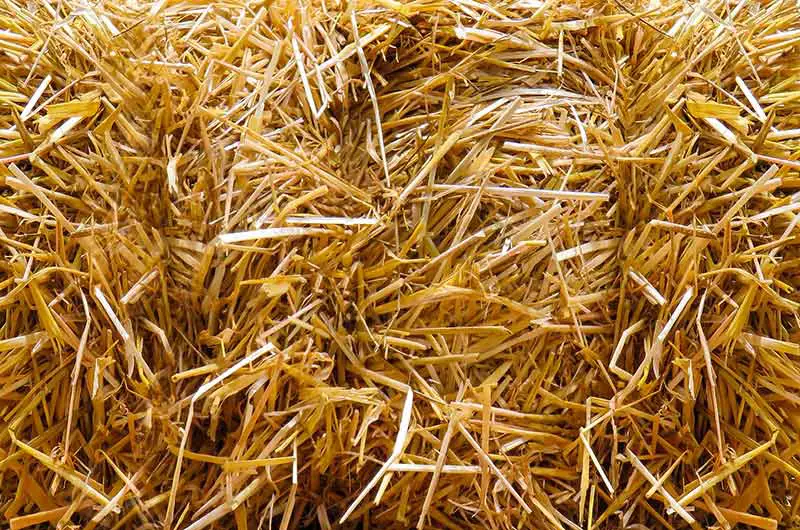
What Type Of Straw Is Best To Cover Grass Seed?
It is vital to choose a variety of straw options that are relatively free of seeds and toxic chemicals that will kill the seedlings or produce unwanted weeds on your newly seeded lawn.
Effective, low-seed straw options include:
- Barley straw
- Oat straw
- Wheat straw
These three yellow grain straws (especially wheat straw) are the most popular choice because they are cost-effective, readily available, and relatively free of seeds that cause weeds. Furthermore, barley, oat, and wheat straw do not contain toxic chemicals harmful to the grass seedlings.
Note that using pine straw may be another alternative, but it needs precaution as it can quickly become problematic due to many pine straws containing a chemical known as terpenes.
Terpenes can affect the growth of your grass seeds and nearby garden plants. So, instead, we recommend you use an aged variety of pine straw where the pine needles are browned and in which the terpenes have already evaporated.
As a quick rule, if the pine needles lack their distinct, characteristic aroma, they are most likely A-OK and ready to use.
Is It Necessary To Cover Grass Seed With Straw?
When seeding a lawn, getting the grass to germinate and grow effectively can be quite the challenge.
If you are overseeding your existing lawn, you typically won’t have to worry about adding a straw covering onto your grass seed because they already get protection from the current grass blades.
However, if you plan to seed a new lawn or have large patches without existing grass, the new grass seeds cannot retain enough moisture to germinate effectively. Your newly planted grass seed will need seed-to-soil contact, adequate moisture, and heat exposure to encourage germination.
Covering the grass seed with straw will prevent the seedlings from drying out as the blanket of straw helps lock in moisture and retain heat. These beneficial factors give the seedlings a better environment and a chance to germinate successfully and speedily.
Furthermore, the straw also prevents the seed from being blown away by the wind or washed away from watering. The straw will also help keep the grass seed in place until they sprout and establish root systems that anchor the seedlings.
What Are The Benefits Of Using Straw To Cover Grass Seed?
Although covering your grass seed is not an essential process, it most definitely improves the grass seed germination rate. Here are the seven benefits of using the straw to cover grass seed:
- The straw will act as a visual screen that prevents and discourages birds and small mammals from feasting on the grass seed.
- Straw covers the grass seed, preventing damage from excessive exposure to direct sunlight.
- The straw will help the soil to retain moisture, essential for proper germination.
- The straw will help to retain heat, which speeds up the germination process of the grass seed.
- Straw coverings will prevent the grass seed from being washed away by rainstorms or overwatering that creates patchy or bare lawn areas.
- Straw acts as a barrier that will prevent the vulnerable grass seeds from blowing away.
- The straw will eventually decompose, thus adding organic matter and valuable nutrients to the soil.
How Much Straw Do You Need To Cover Grass Seed?
You should cover your grass seed with a layer of straw that’s about ½ inch thick. You should aim to add the layer so thick that you’re able to see roughly half of the soil and grass seed through the layer of straw.
A thick layer of straw covering will only inhibit your grass seed growth as it will prevent sunlight from reaching the seeds and soil. Additionally, a thick layer of straw tends to retain too much moisture, creating a habitat for fungal growth like mushrooms.
The fungi will typically outgrow your grass seed with a wet environment, further inhibiting the seedling germination and development.
So, unlike newly planted garden shrubs that prefer a thick layer of mulching, grass seed only requires a light covering coverage. A modest amount of straw over your grass seed is all you’ll need for great results.
How To Apply Straw To Grass Seed?
First, the grass seeds need to come into contact with the soil to germinate properly. So, after applying a thin layer of straw, you’ll want to tramp the straw covering down lightly to ensure proper seed-to-soil contact.
Like we said previously, the straw will help by creating an environment with adequate heat and moisture; however, too much straw will prevent sunlight from reaching the seeds. So, you’ll want to apply a blanket of straw about ½ inch deep.
Lay down the straw bale next to the newly sown grass seeds. Then, break up the bale using a pitchfork.
Next, grab a handful of straw at a time and loosely shake it over the grass seeds to create a blanket over the soil. You want to see half of the ground and seeds when peeking through the straw to prevent the straw from rotting and being too dense for sunlight to reach the grass seed.
One bale of straw should be sufficient for 1,000 square feet.
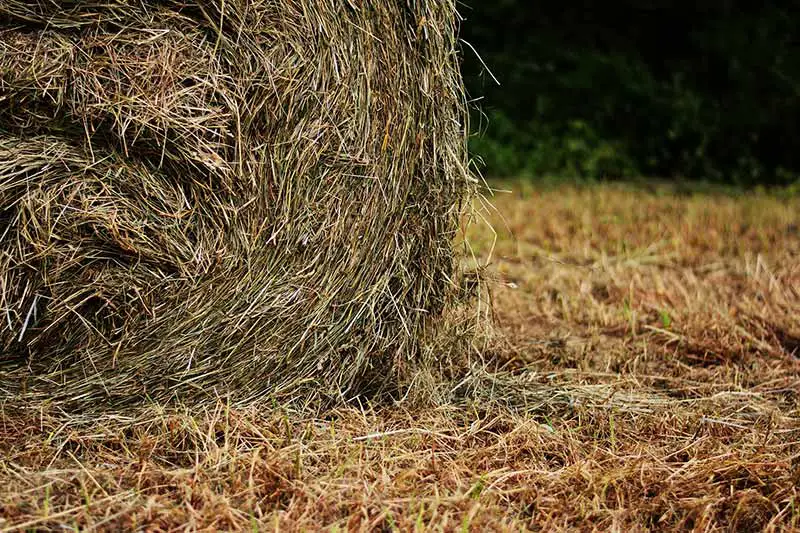
How Long Do You Keep Straw On Grass Seed?
Newly germinated grass seeds will wither and quickly die if they dry out completely. So, it would be best if you left the straw blanket on top of the seedlings while they germinate and reach two to three inches tall (this will generally take three to five weeks).
Ensure that the grass seedlings have minimal exposure to foot trafficking.
Once the grass seedlings grow tall enough for their first mowing, either remove the straw after cutting the lawn or leave it to decompose between the grass blades. The latter will provide additional nutrients and organic matter to the soil.
However, before the first grass cutting, examine the straw covering.
If you had followed the proper application method and the straw covering was light enough, the mulch would have started rotting and decomposing. If this is the case, you typically won’t have to remove the straw.
In comparison, if the straw blanket is too heavy, the heavy straw pockets can smother the new grass. So, remove the straw after moving the grass using a pitchfork or leaf rake. Additionally, be careful not to harm the new lawn.
Use a bag mower to pick up the grass clippings and loose straw, or use a mulching mower to chop the straw into tiny pieces that quickly decompose amid the grass blades.
Straw Alternatives To Cover Grass Seed
If you can’t get hold of a bale of straw, don’t fret, there are similarly effective alternatives to consider covering your grass seed, such as compost and mulch.
Use Organic And Decomposed Compost To Cover Grass Seed
For a cost-effective and ultra-green option, compost is an ideal blanket covering for grass seed. With all of the nutrients that it contains, grass seed grows in compost very well. However, be sure only to use well-aged compost; if the organic particles aren’t entirely decomposed, it can cause the grass seeds to rot.
Additionally, you should finely screen the compost to allow oxygen and sunlight to pass through the covering as clumped compost can suffocate the grass seeds. So, run the compost through a sifting screen to separate the mature compost from the undecomposed matter before applying it to the grass seed.
Compost will boost the quantity of organic matter, improving the soil’s physical, biological, and chemical structure.
Consider using these effective composts to cover your grass seed:
- Leaf compost
- Compost made from yard waste or food scraps
- Mushroom compost
You can either add compost to the soil before planting your grass seed or mix it with the seeds while planting them.
Lastly, if you prefer to cover the grass seeds after planting them, spread around ¼ inch of compost over the seeds; a thin layer of compost will provide adequate protection without inhibiting the germination process.
Use Mulch To Cover Grass Seed
Adding a thin, even layer of mulch on top of your grass seed is another inexpensive and effective covering. Mulch is biodegradable and facilitates healthy soil by adding organic matter to the ground while helping to protect the seedlings from direct sunlight and locking in moisture for adequate germination.
Effective mulching options for grass seed include:
- Peat moss
- Sawdust
- Mulched leaves
- Shredded newspaper
Let’s quickly look at each option:
Peat Moss
While peat moss is an excellent material for holding water, it is also an effective and practical organic mulching material perfect to use as a covering for grass seed.
Peat moss will further enrich the soil with organic matter nutrients once it decomposes.
For peat moss to facilitate grass seed germination, correctly apply it by spreading approximately 1/8 inch over your newly seeded area. Additionally, ensure to water and sufficiently hand-loosen the peat moss from its dense state before applying it to your grass seed.
Loosening the peat moss will prevent the mulch from immediately soaking up the water. So, spread the peat moss into an airy layout across the grass seeds to allow the water to quickly move between the mulch fibers to reach the soil below.
Sawdust
Sawdust is another excellent mulching option to cover grass seed.
You need to apply a thin, even layer of sawdust of approximately ¼ inch onto your grass seed. Ensure that there aren’t any clumps of sawdust laying on the grass seed to avoid triggering a matting effect that will form a barrier for evaporation and drainage and, in turn, discourage germination and growth.
Leaves
Leaves are all around us and freely accessible organic matter that we should use to promote a thriving lawn.
Roughly apply two inches of leaf mulch to your grass seed to encourage seed germination. In fall, you can mow over the leaves to create an instant leaf mulch. Note that using a thicker layer of leaves will increase the likelihood of fungal growth, hindering your seed growth.
Conclusion
To conclude, you probably won’t need to add a layer of straw if you are reseeding an existing lawn, as the current grass blades will provide ample protection to the seedlings.
However, it’s advisable to apply a blanket of straw to new lawns to facilitate an optimal growing environment for your grass seed. Fortunately, straw is a budget-friendly option that will protect your grass seed from excessive sunlight, birds, and being washed and blown away.

